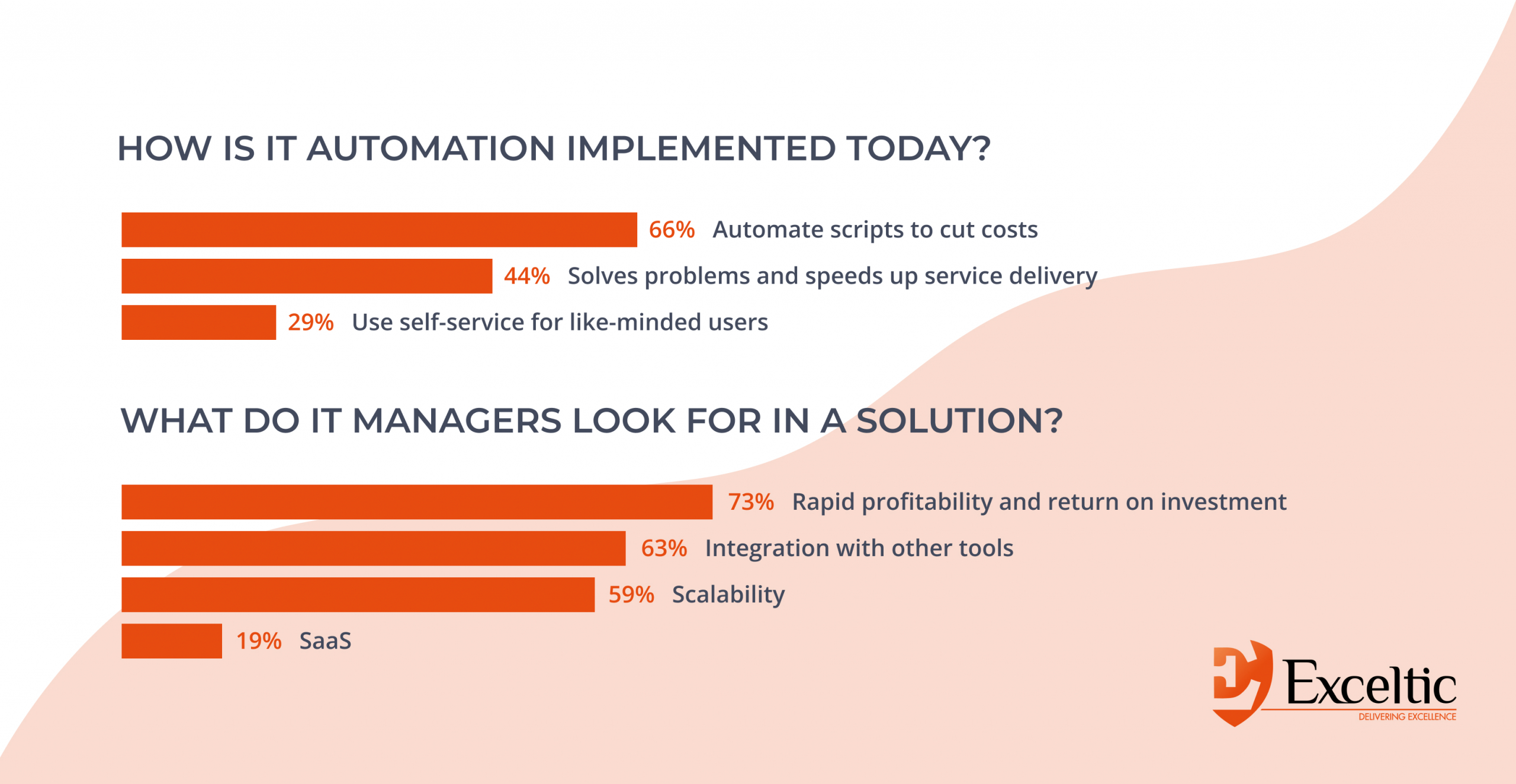Today more than ever, we expect technologies to quickly solve both emerging problems and persistent challenges as we move forward. It automation, in particular, is driving new capabilities, fuelling competitive success and unleashing innovation.
Gatepoint Research's 2021-2022 report covers the top automation (obstacles slowing progress, use cases and most exciting initiatives). Key findings include:
- Impact of the talent shortage
- Building automation workflows with little or no coding
- Why saving time is more important than saving money
- The effects of increased cloud adoption
- The shape of the post-pandemic enterprise
Why do CEOs now rely on IT for decision-making?
Business leaders want to be the heroes of automated infrastructure provisioning, testing, proactive maintenance and other key activities. To achieve this, they are looking for convenience to help streamline operations, increase performance and reduce mean time to resolution (MTTR).
In an environment of increasing complexity, technologies are critical to automate, simplify and orchestrate business processes. Rather than being relegated to a technology consultancy or remediation resource, IT is leading the digital transformation. Automation is key to delivering results and accelerating the achievement of strategic business objectives.
"Automation is the key to delivering results and accelerating the achievement of strategic business objectives".
What challenges can influence agility and speed of execution?
When implementing automation, leaders can face a number of challenges, including:
- The need to foster team collaboration
- Choosing the best testing tools and approaches
- Acquiring human resources and return on investment
The report Gatepoint Research 2021 and 2022, highlights that more than three-quarters of respondents considered talent and staffing shortages to be their biggest problem. Manual and repetitive tasks stalled progress for 57%, while difficulties integrating tools were a stumbling block for 42% of executives.
The 2021 survey showed that for 54% of respondents the biggest challenge is the lack of integration between various technology platforms. On the other hand, too much time spent on manual and repetitive IT tasks stifles potential productivity gains for 48%. Cost and operational efficiency issues were the third concern for 39%.
How are Low Code and No Code tools accelerating automation?
Technology companies are looking for simplicity and speed in creating automation workflows without code - the ability to create them with drag-and-drop ease, without the need for complex APIs or development from scratch.
Whether it's automating simple, repetitive manual tasks, daily run books or orchestrating complex processes, companies are looking to solve challenges through tailored, intelligent automation.
How are leaders implementing IT 2022 automation?
Organisations rarely maintain homogenous environments. This means that IT has to manage a diverse catalogue of tools and applications amidst often incompatible endpoints.
This can lead to an erratic spread of automation, a consequence of an inadequate strategy, with automated system administrators writing scripts to make their job easier.
As opposed to a one-off script executed locally with little or no audit trail, a well thought-out plan reflects end-to-end process automation. Scripting leads the field as the most powerful way to automate simple, repetitive tasks and free companies from manual inefficiencies.
As opposed to a one-off script executed locally with little or no audit trail, a well thought-out plan reflects end-to-end process automation. Scripting leads the field as the most powerful way to automate simple, repetitive tasks and free companies from manual inefficiencies.
Companies are solving common challenges easily and quickly by building codeless automation workflows. For example, pre-packaged components and no-code workflow processing empower teams and accelerate time-to-value and ROI. Plug-and-play tool integration helps create custom workflows and automate processes with the click of a button.







